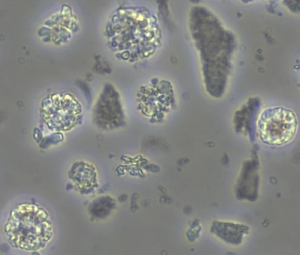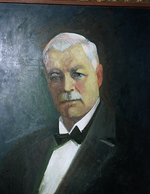Congratulations to Kayko who received funding from the L. Meltzers Universitetsstiftelse for the proposal titled ”Deciphering the role of WNT4 in bladder cancer using patient-derived organoids”!
 Bladder cancer (BC) is the most common cancer of the urinary tract and currently the 10th most common cancer in the world, with 430,000 new cases and 165,000 deaths per year worldwide [1]. Out of all cancer types, BC has one of the highest lifetime treatment costs per patient [2]. Inter-patient heterogeneity is the principal cause of treatment failure in BC patients, which suggests that a more personalized therapy approach could be beneficial for the patients. Recently, patient-derived organoids (PDOs) have been employed in precision medicine approaches as they have been reported to recapitulate tumor tissue composition including genetic heterogeneity and histological complexity [3] [4]. PDOs are minute three-dimensional (3D) models of cancer cells that are cultivated in the laboratory from primary tumors collected from patients [5]. Most of the culture media used for growing PDOs require the use of Wnt, as Wnt signaling is vital for tissue development and maintenance, regeneration of stem cells and in formation of cancer [6][7].
Bladder cancer (BC) is the most common cancer of the urinary tract and currently the 10th most common cancer in the world, with 430,000 new cases and 165,000 deaths per year worldwide [1]. Out of all cancer types, BC has one of the highest lifetime treatment costs per patient [2]. Inter-patient heterogeneity is the principal cause of treatment failure in BC patients, which suggests that a more personalized therapy approach could be beneficial for the patients. Recently, patient-derived organoids (PDOs) have been employed in precision medicine approaches as they have been reported to recapitulate tumor tissue composition including genetic heterogeneity and histological complexity [3] [4]. PDOs are minute three-dimensional (3D) models of cancer cells that are cultivated in the laboratory from primary tumors collected from patients [5]. Most of the culture media used for growing PDOs require the use of Wnt, as Wnt signaling is vital for tissue development and maintenance, regeneration of stem cells and in formation of cancer [6][7].
- T. Hayashi et al., “Mutational landscape and environmental effects in bladder cancer,” Int. J. Mol. Sci., vol. 21, no. 17, pp. 1–14, 2020, doi: 10.3390/ijms21176072.
- K. D. Sievert et al., “Economic aspects of bladder cancer: What are the benefits and costs?,” World J. Urol., vol. 27, no. 3, pp. 295–300, 2009, doi: 10.1007/s00345-009-0395-z.
- H. Yang, L. Sun, M. Liu, and Y. Mao, “Patient-derived organoids: A promising model for personalized cancer treatment,” Gastroenterol. Rep., vol. 6, no. 4, pp. 243–245, 2018, doi: 10.1093/gastro/goy040.
- M. Minoli et al., “Bladder cancer organoids as a functional system to model different disease stages and therapy response,” Nat. Commun., vol. 14, no. 1, pp. 1–16, 2023, doi: 10.1038/s41467-023-37696-2.
- S. Qu et al., “Patient-derived organoids in human cancer: a platform for fundamental research and precision medicine,” Mol. Biomed., vol. 5, no. 1, 2024, doi: 10.1186/s43556-023-00165-9.
- D. Ten Berge et al., “Embryonic stem cells require Wnt proteins to prevent differentiation to epiblast stem cells,” Nat. Cell Biol., vol. 13, no. 9, pp. 1070–1077, 2011, doi: 10.1038/ncb2314.
- Z. F. Zimmerman, R. T. Moon, and A. J. Chien, “Targeting Wnt pathways in disease,” Cold Spring Harb. Perspect. Biol., vol. 4, no. 11, pp. 1–24, 2012, doi: 10.1101/cshperspect.a008086.
Lauritz Meltzer (1861-1943) was born in Lillehammer on March 8, 1861, grew up in Fredrikstad, but he lived most of his adult life in Bergen. He received military and engineering education. He had a great interest in science and research, and when he made his will at the end of 1939, he wrote that the vast majority of his fortune should go to a fund for the benefit of a Bergen University, but with the condition that a university would be established within ten years. Thus, the foundation of the University of Bergen was adopted by the Storting in 1946, and the official opening took place in 1948.
Every year, on Lauritz Meltzer’s birthday, the L. Meltzer University Fund awards student scholarships, grants for projects and scientific trips.

